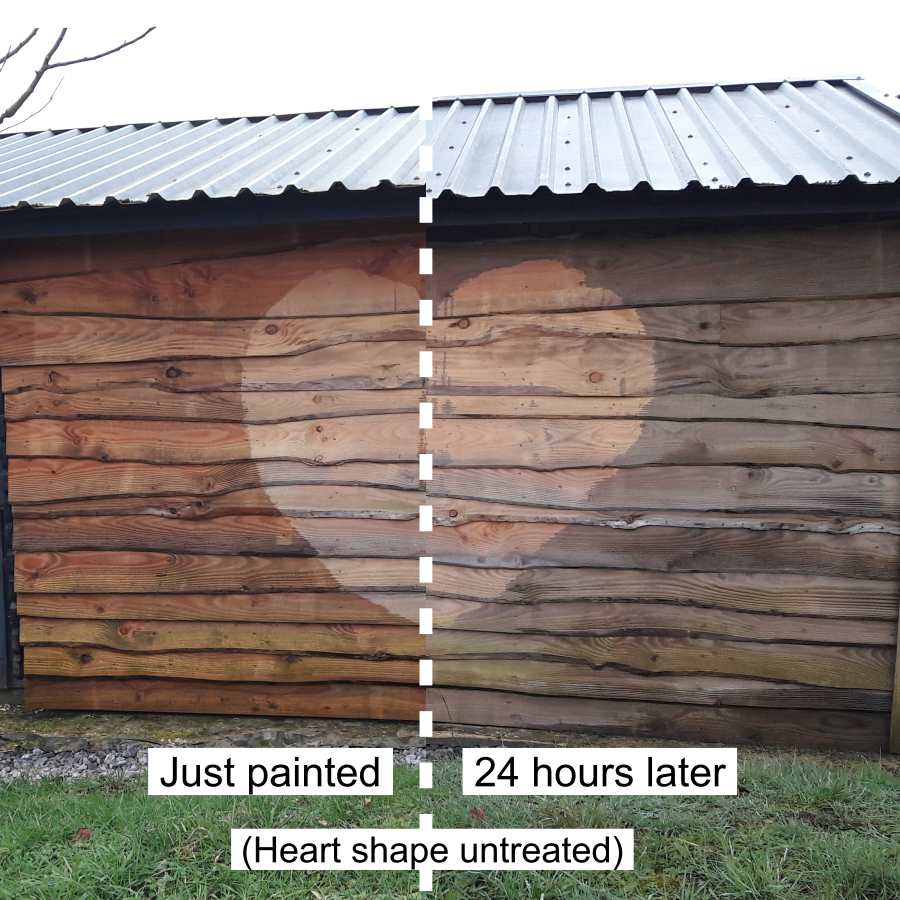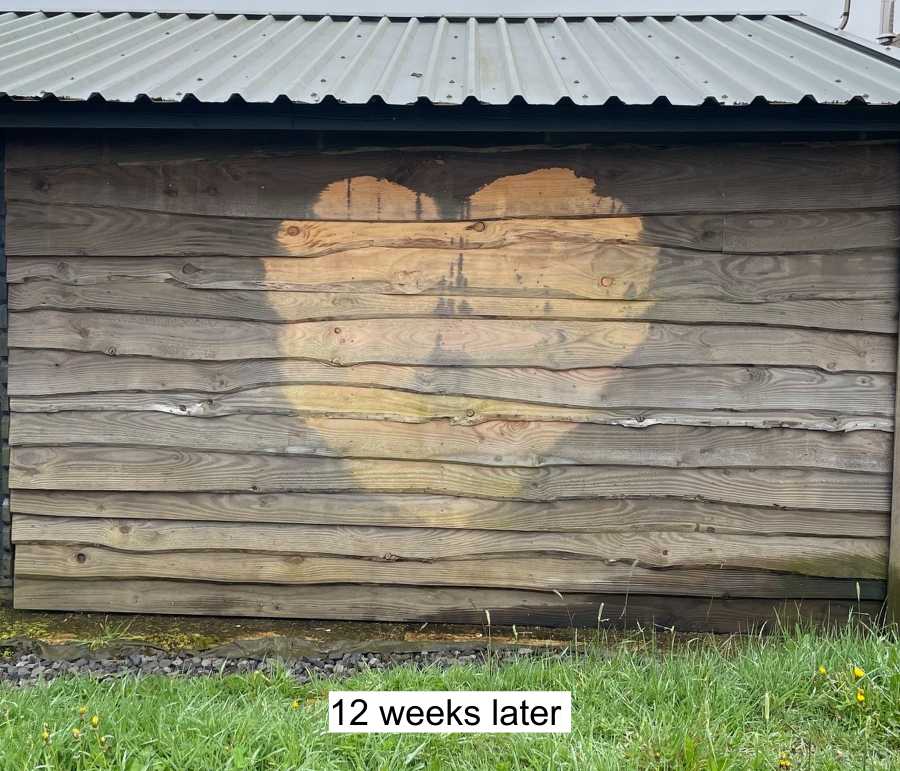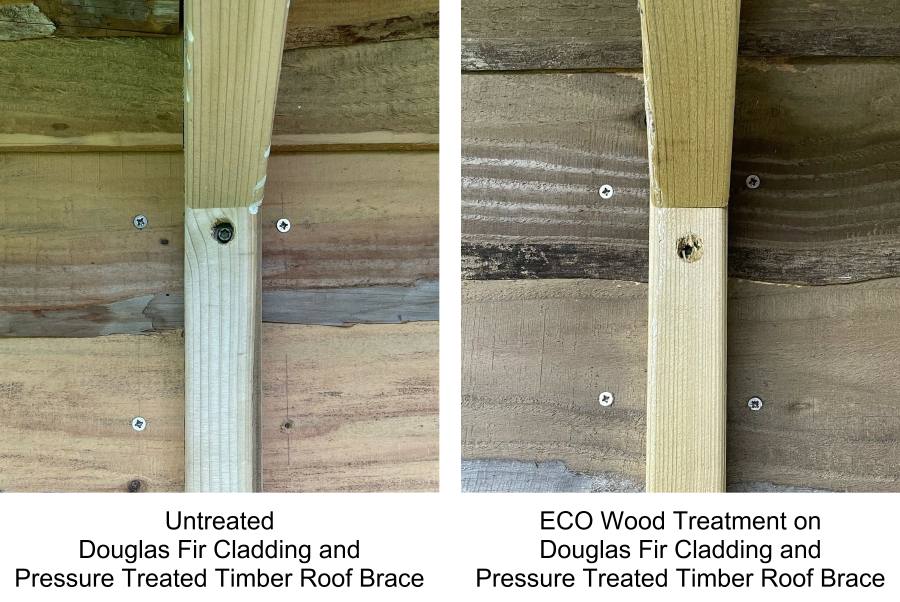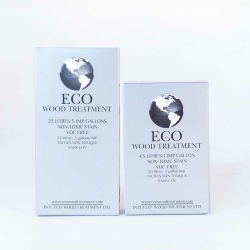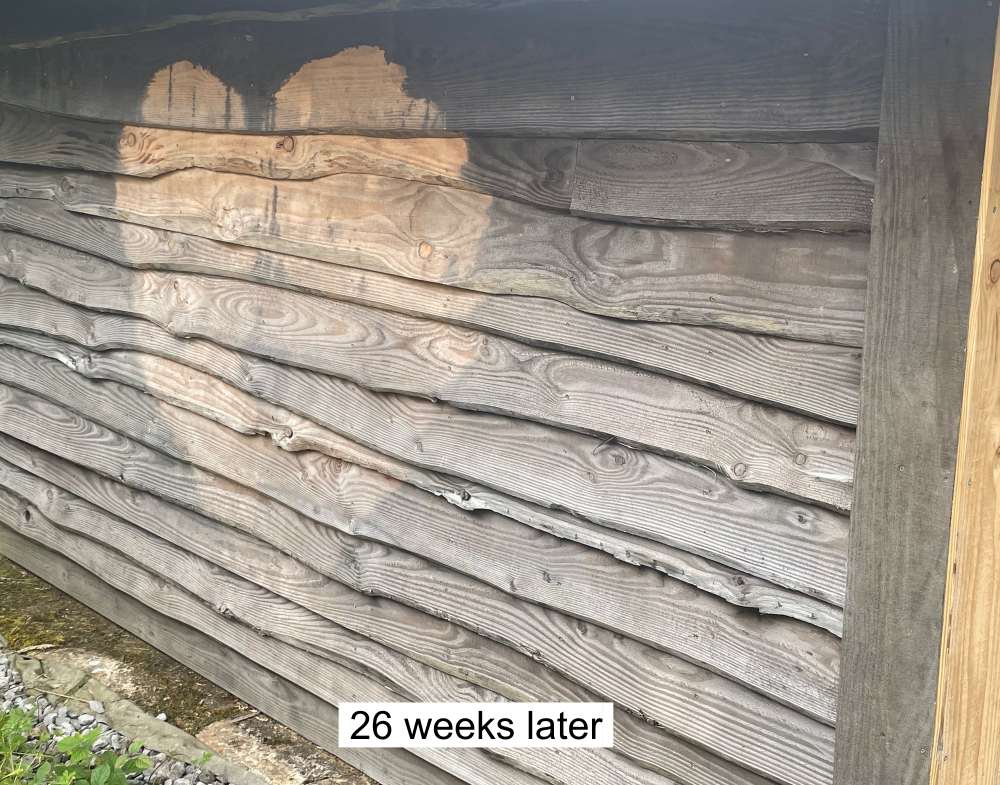Silvery Wooden Cladding Fast
Posted by Morag, Celtic Sustainables on 18th Apr 2024
The topic of how to make wooden cladding weather faster to that beautifully aged silver wood aesthetic came up in a conversation with a customer. They were mid-way through their One Planet Development in the beautiful Gower peninsula and we were quoting them for natural fibre insulation. It turns out that they had found a product that works fast, is easy to use, is environmentally friendly and at a great price point. They were keen to tell us about it.
Now, when a customer recommends an environmentally friendly product to us that we don’t already stock we sit up and listen. This is exactly what happened with ECO Wood Treatment. Of course, we do our own research and due diligence.
The thing that first struck us about people’s reviews of the ECO Wood Treatment was how positive they were. Phrases like “easy to use”, “goes a long way”, “lovely weathered look” and “would buy again” abounded. One review (from the USA) even mentioned that they have been using on their (professionally manufactured) bee hives for the last six years and that even the oldest treated beehives are still solid to this day (whereas previously their non-treated ones failed within 2 years).
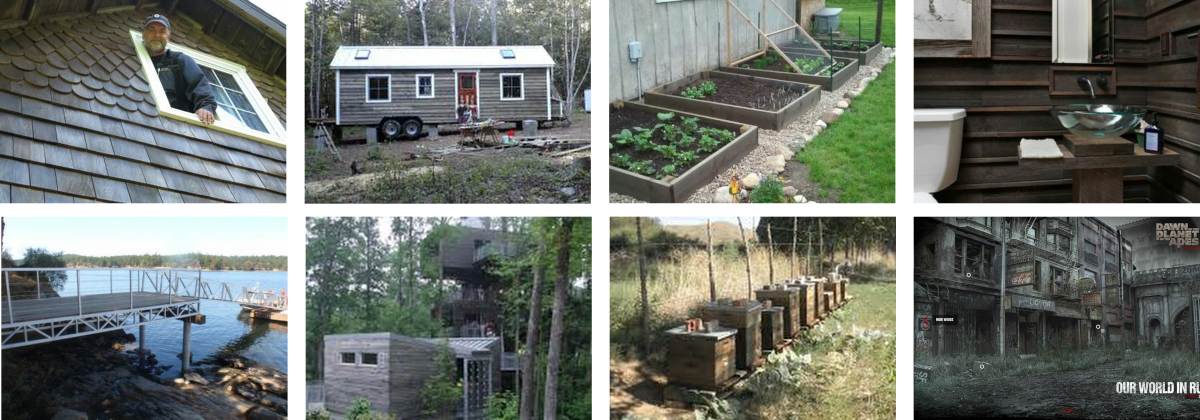
Images: Eco Wood Treatment possible uses on bare timber (from the Eco Wood Treatment website)
Another positive aspect of ECO Wood Treatment, for us, is that it arrives as a small packet of powder that you add to water as and when you want to use it. It is, therefore, less heavy and bulky compared to distributing a “ready-made” product that already has water added to it (saving on CO2).
During further research, we discovered that ECO Wood Treatment had been used by the Nova Scotia Natural Resources for picnic tables (and other National Park Authorities for external timber), the City of Calgary for treating sound barrier fencing and the British Columbia Ministry of Transportation for highway and municipal sign usage. Indeed, it has been used in Canada and the United States for over 50 years. And herein lies a potential issue. ECO Wood Treatment is manufactured in Canada 2700+ miles away* - see footnote.
If the product works, is environmentally friendly in other aspects (not harmful to the environment or the person using it) and helps wood last longer (by protecting it from white rot fungi) with just one coat, does it mitigate environmental costs in the travel miles from Canada for distribution?
At Celtic Sustainables, we have always been about being as transparent about the products that we stock as possible and letting the customer decide if a product falls within their environmental and ethical priorities. We are impartial and aim to offer “better” solutions than the ones more readily available in larger/mainstream stores.
Trialling ECO Wood Treatment on Wooden Cladding
If the product doesn’t function at least as well (and preferably better) than the mainstream alternatives, then the research is over. Anecdotally of course from the reviews it appears to work. But you only really get a true understanding of the product by using it in person. Does it smell? Does it stain? How fast does it start to work? Is it really that easy to use?
We got hold of a sample and set about using it on a newly clad summer house in Wales. The cladding was made from roughly sawn Douglas Fir which we know weathers to a silvery colour over many months. To research and compare how fast the wood turned silvery with the ECO Wood Treatment we left a heart-shaped patch untreated on the cladding. The “heart” wall faces east and there is a large overhang from the roof which protects the top of the wall from most of the rain.
We chose a cloudy dry day in January to treat the cladding.
Our first reaction, when opening the packet that makes 4.5L, was that it wasn’t very much powder at all to mix with 1 gallon of water. It’s just 40 grams of powder! The packaging does say that it is a concentrate and highly acidic, so with care (and suitable PPE - goggles etc) , we emptied the whole lot into a suitably sized bucket of tap water. There was no smell that we could detect and no reaction to the water. Stirring steadily, we couldn’t really see when it was all mixed in either, it just seemed to dissolve.
After a good 2 or 3 minutes of mixing with a stick, we decided it was probably time to put it onto the cladding. The largest brush we had to hand was an old 4” brush. Which did the job just fine (apart from the drips into the heart that you can just see in the image, which we are blaming the tools for rather than the carelessness of the “artist”!).
As the instructions say, we stirred the bucket of ECO Wood Treatment water occasionally during the time we were painting and were careful to make sure the end grains, cracks and holes were covered with the treatment. We noticed that the water in the bucket was slowly turning a dark brown as we refreshed our brushes with the treatment but put that down to maybe some dust or residue from the cladding. We didn’t worry about catching drips or putting too much on. We just made sure to cover all the wood outside the “heart” control area (non-treated area to act as a comparison).
There was plenty of ECO Wood Treatment solution left in the bucket after painting the “heart” wall, so we put the rest on another side of the summer house cladding. We estimate, in total, it probably covered 13m2 on this rough-sawn wood plus some tricky to treat pressure treated roof braces (see photos below). We would expect rough-sawn wood to take up more liquid than sawn or sanded timber. The pack claims it covers 14m2. So about right.
The summer house has a concrete path around it, but we didn’t notice any staining from the drips (the instructions say this could happen on concrete and to take extra care), but then the path is quite old and rough, so maybe any stains would have been difficult to see anyway. We recommend protecting any concrete that you don't want to get stained. The instructions include details on what to do if you do accidentally get the treatment on to concrete.
The next day, not expecting much of a change, we were surprised to see that ECO Wood Treatment was already changing the colour of the wooden cladding surrounding the heart shape. The new grey colour of the treated area was slightly greenish but there was a definite difference. We were excited to see what it would look like in a few weeks or months and indeed to also find out how quickly the untreated “heart” shape would catch up to the treated area (if at all).
By early April (approximately 12 weeks after painting the cladding with ECO Wood Treatment), the Silvering of the wood around the “heart” was very much taking effect. Interestingly the colour was darker towards the top of the wall (in the shadier area) and more silvery to the bottom. On some of the cladding edges mid-way down the wall, you can also clearly see places within the heart (non-treated area) where the Douglas fir is ageing naturally to silver. You can also see the drips of ECO Wood Treatment now more clearly in the heart (doh!). Note in the picture the area of the wall that gets the worst of the rain (bottom right) that we will be keeping an eye on for rot.
On the north side of the summer house (where we had used up the remaining solution of ECO Wood Treatment), the weathering is slower. This side doesn’t get as much sunlight or rain. The Douglas fir cladding has turned darker rather than silvery. It’s further behind the eastern “heart” wall in that respect.
ECO Wood Treatment on Pressure Treated Timber
On the northern side of the Douglas fir-clad summer house, the roof is braced with pressure-treated timber. We put the ECO Wood Treatment on some of the braces, but not all. An experiment to see how fast the colour change happens on Pressure Treated Timber.
This side of the Summer House doesn’t get as much sunlight or rain compared to the eastern “heart” side. On this side, the Douglas Fir cladding has turned darker rather than silvery. It’s a little further behind the eastern “heart” wall in that respect.
The pressure-treated timber braces that we treated with ECO Wood Treatment are turning colour but at a much, much slower rate. The untreated braces still have that green tinge that pressure-treated wood tends to have in the UK. While the ones that we painted with Eco Wood Treatment have turned a slight browny grey. It’s subtle at this stage (12 weeks since treatment). It was more difficult for the ECO Wood Treatment Solution to penetrate the sanded pressure-treated wood compared to the rough-sawn cladding (which just soaked up the solution). Which may contribute to the difference we observe. If we treat another of the pressure-treated timbers with the ECO Wood Treatment we try giving it a light sand first. Watch this space!
How to purchase ECO Wood Treatment in the UK
We stock packets of ECO Wood Treatment that make 4.5L and 22L which cover approximately 14m2 and 70m2 respectively.
Simply order online for delivery to the whole of the UK or collect when you next visit our shop in Cardigan, Wales.
Update: 26 weeks after ECO Wood application
The lower part of the untreated "heart" shape has almost caught up with the silvery shades of ECO Wood treated areas. This lower part of the west facing cladding gets most of the sun and rain so weathers faster. The top part of the "heart" hasn't changed much at all. This area is protected by an overhanging roof.
Note, to the right of the photo, an area of untreated douglas fir cladding on the north side of the garden shed. This northen side doesn't get much sun or rain and (unless I decide to treat it with ECO Wood) will be very slow to weather to that nice silvery aesthetic.
* The whole carbon footprint for importing thing lay heavily on our minds, so we did some rough CO2e calculations based on distance travelled by aeroplane or freight, weight, coverage and number of times to recoat in a “lifetime”.
We compared the ECO Wood Treatment to a conventional household name UK wood preserver purchased in liquid form (manufactured in the UK) that requires an initial 3 coats and then a recoat with one coat every 2 years (the conventional wood preserver had all sorts of environmental warnings on it, but here we were just interested in the carbon footprint of travel).
We discovered that for the first treatment, the two products had very similar travel carbon footprints – the conventional product was slightly larger. But because ECO Wood Treatment is designed to be used just once (no recoats required ever) it came out as having a far lower carbon footprint over the lifetime of the treated item. Indeed, four years after the initial treatment the conventional product we were comparing against (assuming it was recoated as per the instructions) would have about twice the carbon footprint than the ECO Wood Treatment.
It just goes to show that shipping products in a powder-concentrated form is far more efficient than shipping them with the water already added! Additionally, again stating the obvious, products with a longer lifespan have a lower lifetime carbon footprint.




